HP Aruba Certified Mobility Expert Written HPE6-A79 Exam Practice Test
Refer to the exhibits.
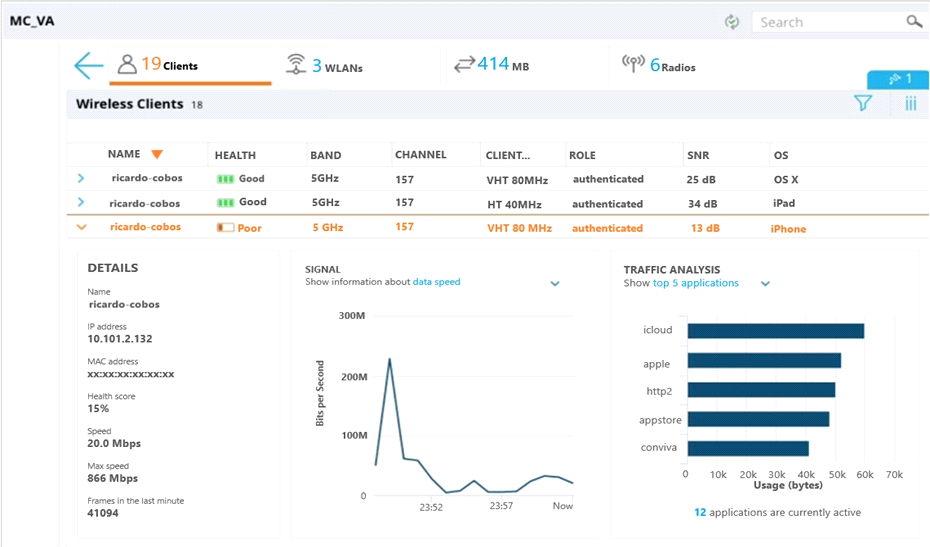
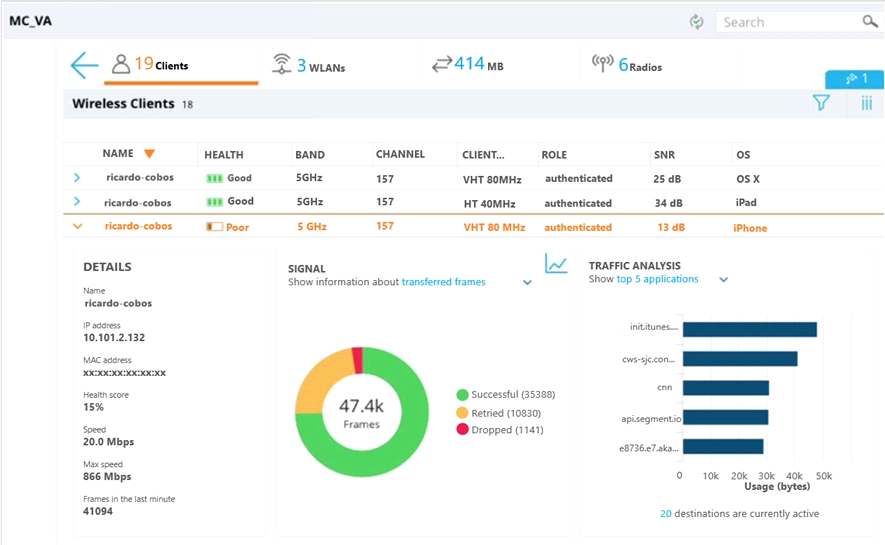
A user reports slow response time to a network administrator and suggests that there might be a problem with the WLAN. The user's phone supports 802.11ac in the 5 GHz band. The network administrator finds the user in the Mobility Master (MM) and reviews the output shown in the exhibit.
What can the network administrator conclude after analyzing the data?
Answer : D
Refer to the exhibit.
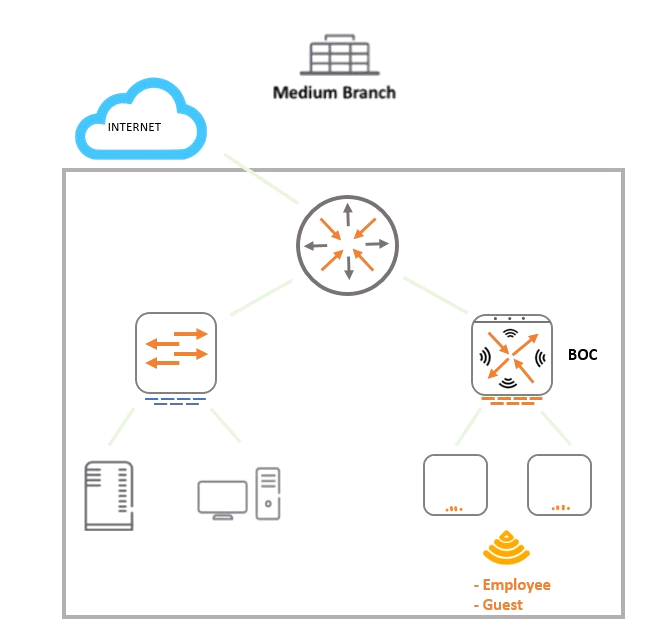
A 7008 Branch Office Controller (BOC) is deployed in a remote office behind a core router. This core does not support 802.1q encapsulation. The Mobility Controller (MC) is the gateway for two tunneling mode SSIDs, as shown in the exhibit.
Which two different configuration options ensure that wireless users are able to reach the branch network through the router? (Choose two.)
Answer : B, E
Refer to the exhibits.
Exhibit 1

Exhibit 2
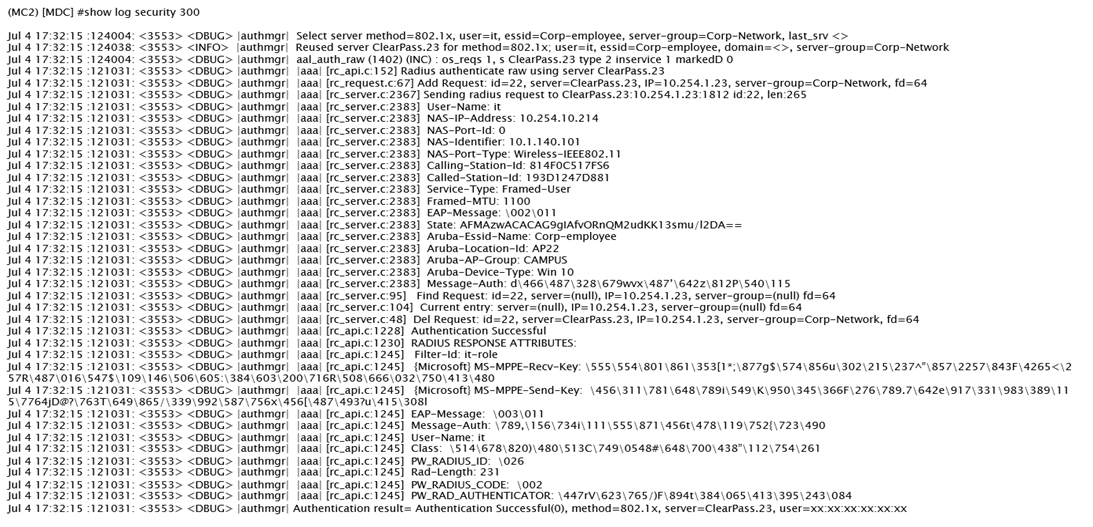
A network administrator integrates a current Mobility Master (MM) - Mobility Controller (MC) deployment with a RADIUS server to authenticate a wireless user, the network administrator realizes that the client machine is not failing into the it_department role, as shown the exhibits.
Which configuration is required to map the users into the proper role, based on standard attributes returned by the RADIUS server in the Access Accept message?
Answer : C
A network administrator is in charge of a Mobility Master (MM) -- Mobility Controller (MC) based WLAN. The administrator has deployed an Airwave Management Platform (AMP) server in order to improve the monitoring capabilities and generate reports and alerts.
The administrator has configured SNMPv3 and Admin credentials on both the MMs and MCs and has created Groups and Folders in the AMP server.
What two additional steps must the administrator do in order to let Airwave monitor the network devices? (Choose two.)
Answer : A, B
Refer to the exhibit.
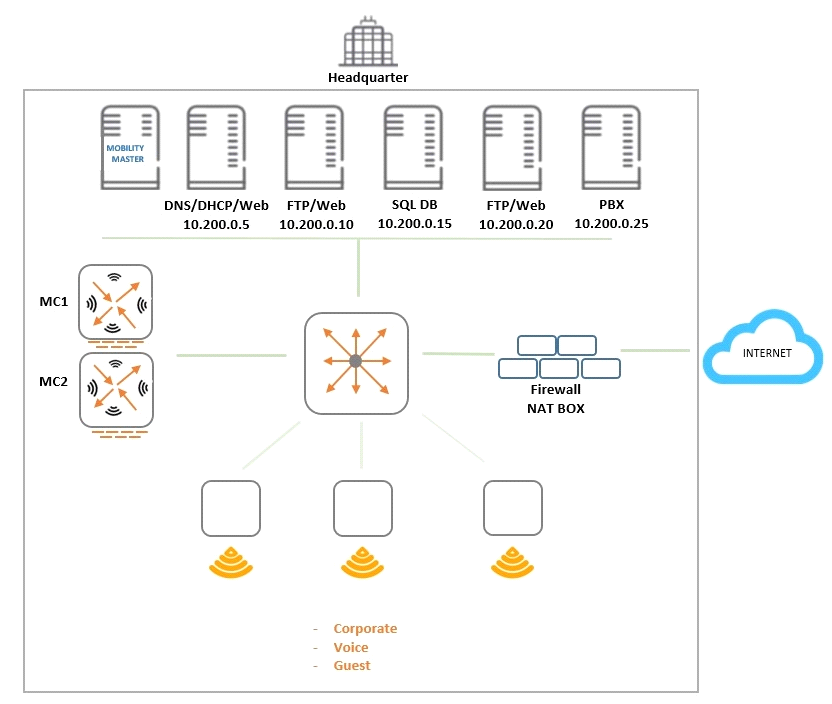
An organization provides WiFi access through a corporate SSID with an Aruba Mobility Master (MM) - Mobility Controller (MC) network that includes PEF functions. The organization wants to have a single firewall policy configured and applied to the employee role.
This policy must allow users to reach Web, FTP, and DNS services, as shown in the exhibit. Other services should be exclusive to other roles. The client NICs should receive IP settings dynamically.
Which policy design meets the organization's requirements while minimizing the number of policy rules?
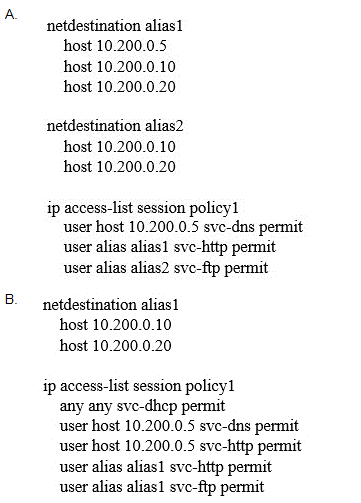
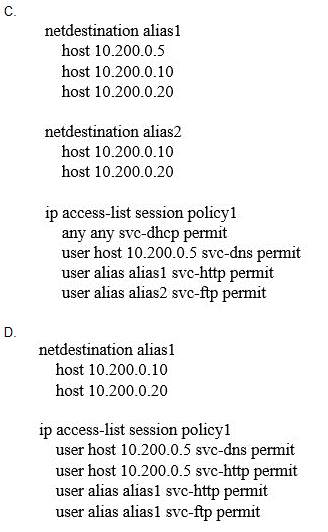
Answer : C
A network administrator has deployed an Airwave Management Platform (AMP) server and integrated it with a Mobility Master (MM) -- Mobility Controller (MC) based WLAN. The AMP server already has all Aruba Mobility devices including Access Points (APs) in the ''UP'' devices list.
What are two actions the administrator can execute upon the APs under ''Airwave>Devices>Monitor''? (Choose two.)
Answer : D, E
A software development company has 764 employees who work from home. The company also has small offices located in different cities throughout the world. During working hours, they use RAPs to connect to a datacenter to upload software code as well as interact with databases.
In the past two month, cabling issues have occurred connection to the 7240XM Mobility Controller (MC) that runs ArubaOS 8 and terminates the RAPs. These RAPs disconnect, affecting the users connected to the RAPs. This also causes problems with code uploads and database synchronizations. Therefore, the company decides to add a second 7240XM controller for redundancy.
How should the network administrator deploy both controllers in order to provide the redundancy while preventing failover events from disconnecting users?
Answer : A